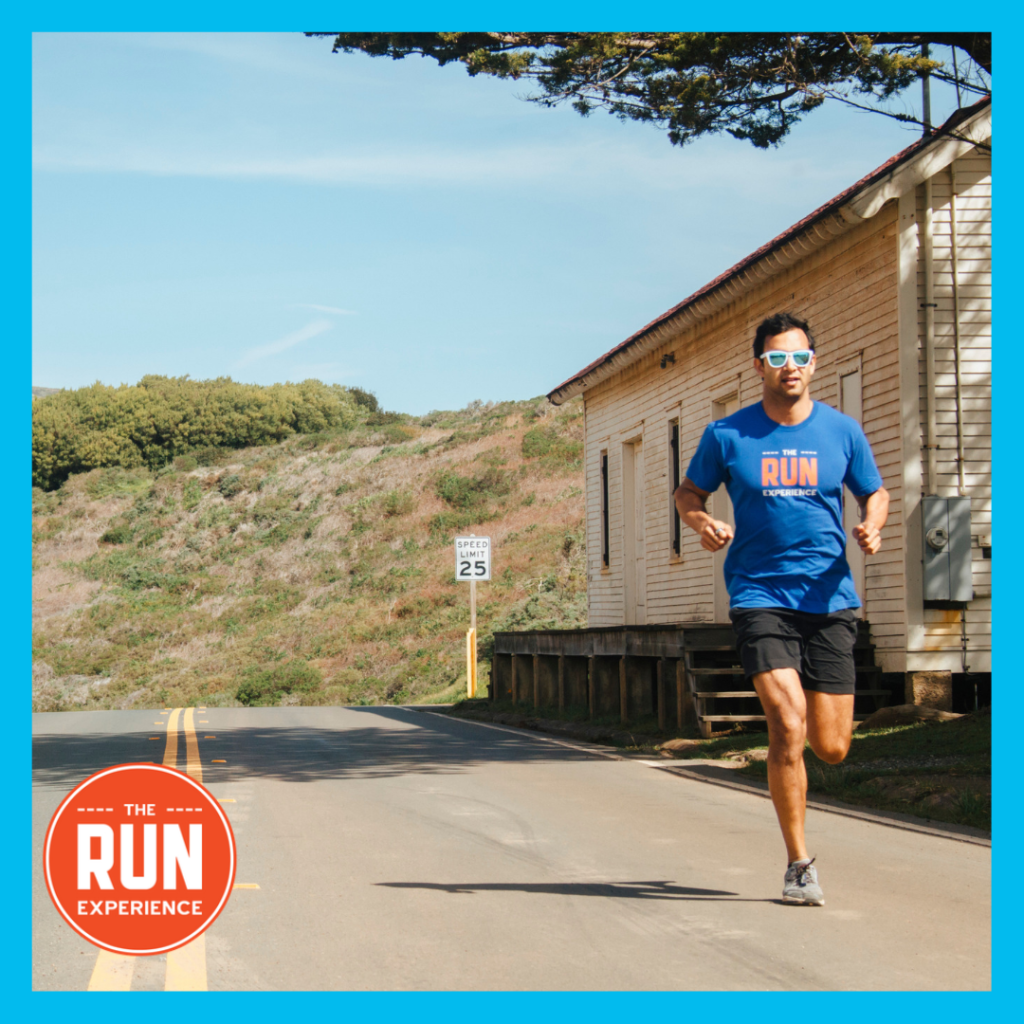11+ Tips to Improve Your Running Form in 2023

Improving your running form doesn’t happen naturally. Running more doesn’t mean you’re running better. You have to take intentional action to improve your running form and boost your economy.
As children, running comes naturally to us. But that doesn’t mean the way we run is the most economic. It doesn’t mean our running form is optimizing the use of our body’s energy to get the most out of each stride. Does anyone have the perfect, proper running form?
No. But it doesn’t mean there aren’t benefits and that we shouldn’t practice improving our running form on a daily basis. Today, we’ll explore the benefits of proper running form and hear tips from our expert TRE coaches on maximizing your running form so you can run stronger, longer, and faster.
Why Focus on Improving Running Technique?
By perfecting technique, runners can not only enhance performance but also cultivate longevity in the sport. Here's why refining running technique is important for anyone hitting the pavement, trail, or track:
- Injury Prevention: The majority of running injuries are overuse injuries, stemming from repeated stress without adequate recovery. Poor technique can exacerbate this stress, leading to common ailments like runner's knee, shin splints, Achilles tendinitis, and IT band syndrome. Proper form ensures that forces are distributed efficiently and safely throughout the body, reducing strain on any single area.
- Improved Efficiency and Speed: Good running form reduces wasted energy. By eliminating extraneous movements, runners can channel more energy into forward propulsion, translating to faster times and improved endurance.
- Increased Running Economy: Just as a car with better fuel economy will travel further on a gallon of gas, a runner with better running economy will use less energy at a particular speed. Improved technique can enhance running economy, allowing for longer or faster runs with the same energy expenditure.
- Enhanced Longevity in the Sport: By reducing injury risk and promoting efficient biomechanics, good form ensures that runners can enjoy the sport for years—or even decades—longer than they might with a subpar technique.
- Better Muscular Engagement and Balance: Proper running technique ensures that the right muscles are activated at the right time. This balance reduces the risk of muscular imbalances, which can lead to pain and injury.
- Reduced Fatigue: Poor form can lead to premature fatigue, as the body expends extra energy on ineffective movements. By refining technique, runners can conserve energy and reduce the onset of fatigue during long runs or races.
How to Improve Your Running Form
We all have a certain, particular running gait. There are people I’ve run with for a long time who I can call out before even seeing them by looking at their shadow or even hearing how their cadence as their feet hit the ground behind me. It’s what makes us unique–but improving our running form also makes each running a better runner and helps prevent injuries.
The top tips to improve your running form are:
- Run tall to help keep your glutes from working too hard. One of my coaches said, “Imagine you have a string pulling you every so slightly right above your head.” Running tall keeps your body balanced and muscles working in tandem.
- Avoiding crossing your arms over one another helps you save energy, so you don’t hit the wall at the end of a long training run or race. We have drills to help you focus on this one!
- A high running cadence of 184-190 bpm encourages your foot to land under your hips, as opposed to too long of stride–also called overstriding. When you overstride, your foot lands far in front of your knee, causing a heel strike, which often fosters injury.
Our YouTube channel is packed with videos to help you develop proper running form. Check out:
1. Five-Minute Running Form Fix
Coach Nate’s five-minute running form fix video that reveals two of the biggest challenges that runners of all levels face–hip drop and over-rotation. Discover specific tangible, ideas on how to draw awareness and make improvements on your workouts.
2. Improving Your Running Form Without A Coach or Camera
Building proper running technique without a coach or camera can seem impossible at first. But, it’s the best approach for runners of all levels to make steady improvements. In this video, Coach Nate shares a sensory-based approach to run technique using what you feel and what you hear to make critical adjustments and changes.
Normally, this type of exercise would be very difficult to do while listening to music or a podcast, but with the right headphones and bone conduction technology, you can actually do both.
3. Improve Your Running Form with Proper Arm Swing and Core Stability
Coach Holly is a running form pro. Learn how to improve your running form with a more efficient arm swing and increased core stability. Join her to have her take you through some simple drills to get you running faster and more powerfully than ever before!
4. How to Change Your Running Technique–And When to Do It
Join Coach Nate and dive into the common misconceptions many runners have around running technique–and the mistakes they make when trying to change it, such focusing on our feet too much or changing things too fast and out of order. Learn three powerful running form drills you can start doing today that will set you up for long-term success and improvement.
The Best Ways to Improve Running Form From TRE Expert Coaches
We asked our team of coaches who’ve helped hundreds of runners to improve their running form for their best tips. Here’s what they said:
6. Coach Edward Wickham: Form Drills

“My favorite tip for improving running form is doing form drills, then doing speed work. In my experience, doing the speed work forces my body to create the most efficient form. Start with short times: 6 x 3:00 minutes at tempo paces with three minutes of recovery, for example then eventually progress to longer times and overall duration, like 4 x 8:00 minutes at tempo pace with minutes of recovery.”
7. Coach Craig Dos Santos: Mental Models

“Tip One: Make use of mental models. I sometimes have trouble landing under my center of gravity, so often imagine a chain around my waist that is pulling me forward, so that I am leaning more and leading more with my hips.
Tip Two: I also like to imagine running over water (landing lightly) and often will remove my headphones and listen to see if I can hear my footstrike too much. The lighter it feels, the better.”
8. Coach Nate Helming: Focus on One Thing

“Tip One: If you want to change your run form, don’t try to do all the changes for all of the time you’re running. It will feel weird and you will be miserable and will ultimately flame out. Instead, pick one thing and focus on it for a week at a time. Allot three to five focused minutes on it tops in the beginning and end of your runs. In between, mentally let it go and try and enjoy yourself! 😉Tip Two: If you’re going to “fix” anything, don’t start with your feet. Too often, you’ll trade one problem for another by trying to manipulate how your feet hit the ground. Instead, start with relaxed shoulders and a smooth arm swing. Keeping yourself relaxed and smooth here will ensure that the rest of you stays smooth and relaxed–not only for higher cadence but a more natural footfall!”
9. Coach Elizabeth Inpyn: Develop Your Posture

“Tip One: Develop a ‘Presidential Posture.’ Standing straight and tall, make sure your shoulders are in front of your hips to influence natural momentum forward.
Tip Two: Improve your arm Carriage. You’re not a kangaroo! Focus on a tidy and supple arm carry, with the propulsion of your swing happening mostly behind your body.”
10. Coach Holly Martin: Slow Down

“Tip One: You can’t expect to make a major transformation at your regular pace, so slow down when “fixing” your form. You can always speed things back up once you’re comfortable, but if you need to slow down to find out how and why something works, do it!Tip Two: For me, smaller, quicker steps are the golden ticket to getting up any hill. I’ve done a lot of long races with a lot of climbing, and that switch has made all the difference – allowing me to control my breathing while keeping my hips forwards so that my glutes, hamstrings, and core can get me through the hard work without injury.”
11. Coach Morgan Hawkins: Use Your Imagination

“Tip One: Especially on hilly runs, I tend to hunch over because I’m tired. To help me reset my form, I imagine someone had a rope around my waist and they’re pulling me up the hill. That makes me push from my hips and utilize my glutes–which is where all your power comes from. If you’re bent over at the waist your glutes can’t ‘fire.’
Tip Two: During races or hard runs, it’s easy to tense up and focus on just getting to your destination rather than what your form looks like. I have to constantly remind myself to shake out my arms and flex my fingers to loosen up. I also take in a deep breath all the way into my stomach and exhale while rolling my shoulders back to reset them and keep loose.”
Improve Your Running Form With the TRE App
If you want to improve your running form and become a stronger, faster runner–or you want to know more about our training programs, be sure to download our app for access to new workouts each week and tons of training videos and resources!
